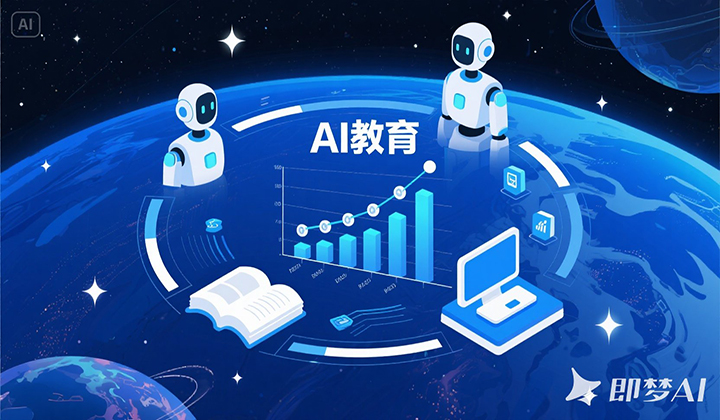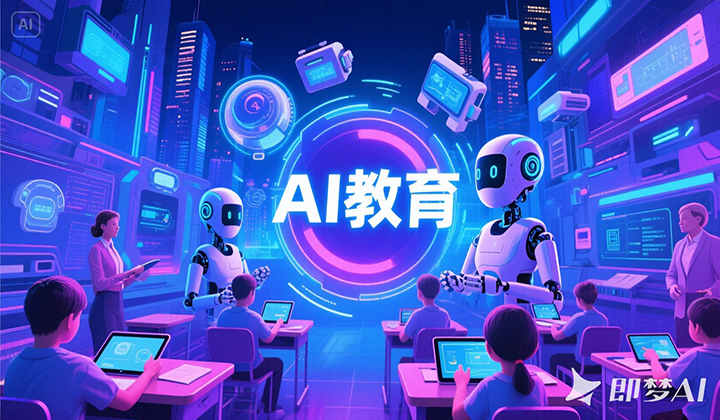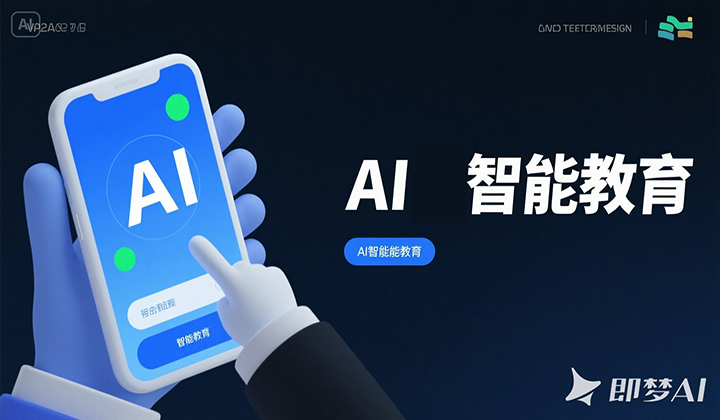Cutting-Edge AI Technologies: Shaping the Future of Humanity
江浸月 2025-05-22
In an era defined by exponential technological growth, artificial intelligence (AI) stands as the vanguard of innovation, continuously redefining the boundaries of human potential. As we delve into the mid-2020s, AI is no longer confined to theoretical concepts or sci-fi narratives; it has evolved i
In an era defined by exponential technological growth, artificial intelligence (AI) stands as the vanguard of innovation, continuously redefining the boundaries of human potential. As we delve into the mid-2020s, AI is no longer confined to theoretical concepts or sci-fi narratives; it has evolved into a tangible force driving transformative changes across industries, from healthcare and education to transportation and entertainment. This article explores the most groundbreaking AI 前沿 technologies (cutting-edge AI technologies) that are currently reshaping our world, highlighting their applications, challenges, and the profound impact they hold for humanity's future.
1. Generative AI: Redefining Creativity and Production
Generative AI has emerged as one of the most captivating frontiers, enabling machines to create original content that rivals human creativity. Models like GPT-4 (Generative Pre-trained Transformer 4) and DALL-E 3 demonstrate unprecedented capabilities in generating text, images, audio, and even video content. GPT-4, with its trillion-parameter architecture, can produce coherent essays, write code, and engage in nuanced conversations, blurring the lines between machine-generated and human-created text. DALL-E 3 takes visual creation to new heights, translating textual descriptions into hyper-realistic images and artistic masterpieces, empowering designers, marketers, and creators with limitless imaginative tools.
Beyond creative arts, generative AI is revolutionizing product design and manufacturing. Companies like Nike and Adidas are using AI to generate unique shoe designs, while automotive manufacturers employ generative algorithms to optimize vehicle aerodynamics and interior layouts. In the healthcare sector, generative models are assisting in drug discovery by designing novel molecular structures, significantly reducing the time and cost associated with pharmaceutical development. However, this technology also raises important ethical questions about intellectual property, misinformation, and the authenticity of creative work, necessitating the development of robust regulatory frameworks.
2. Quantum Machine Learning: Harnessing Quantum Power for AI
The convergence of quantum computing and machine learning gives birth to quantum machine learning (QML), a field poised to solve problems that are insurmountable for classical computers. Quantum computers leverage quantum bits (qubits) to process information in superposition states, allowing them to handle exponentially larger datasets and complex computations. When integrated with AI algorithms, QML can enhance tasks such as optimization, pattern recognition, and cryptography.
For instance, in logistics, quantum-optimized AI can solve complex route-planning problems in real-time, minimizing fuel consumption and delivery times for global supply chains. In finance, QML models can analyze market trends with unprecedented accuracy, identifying investment opportunities and managing risk more effectively. Moreover, quantum-enhanced encryption techniques could revolutionize cybersecurity by creating unbreakable codes, protecting sensitive information in an increasingly digital world. Although quantum computing is still in its infancy, with only a few dozen qubits available in commercial systems, ongoing research in companies like IBM and Google promises to unlock the full potential of QML in the coming decades.
3. Neuro-Symbolic AI: Bridging Machine Learning and Symbolic Reasoning
Traditional AI systems, based on deep learning, excel at pattern recognition but lack true symbolic reasoning—the ability to understand abstract concepts and logical relationships. Neuro-symbolic AI aims to bridge this gap by combining the learning capabilities of neural networks with the logical structure of symbolic systems. This hybrid approach enables AI to not only recognize patterns but also explain decisions, reason about cause and effect, and integrate prior knowledge into its learning process.
In healthcare, neuro-symbolic systems are transforming diagnostics by combining patient data analysis with medical knowledge bases, providing clinicians with evidence-based treatment recommendations. For example, IBM Watson's latest iterations use neuro-symbolic techniques to interpret complex medical literature and genomic data, assisting in personalized cancer treatment plans. In autonomous vehicles, this technology enhances decision-making by integrating real-time sensor data with symbolic representations of traffic rules and ethical frameworks, enabling safer and more context-aware driving. By fostering explainable AI, neuro-symbolic systems address the "black box" problem of deep learning, making AI more transparent and trustworthy for critical applications.
4. AI-Driven Drug Discovery and Healthcare Revolution
The healthcare industry is witnessing a paradigm shift with AI 前沿 technologies driving breakthroughs in drug discovery, diagnostics, and personalized medicine. Machine learning algorithms can analyze vast datasets of molecular structures, genetic information, and clinical trials to identify potential drug candidates at an accelerated pace. Companies like DeepMind's AlphaFold have already made headlines by accurately predicting protein structures, a feat that took decades for humans to achieve, enabling researchers to understand disease mechanisms and develop targeted therapies.
In diagnostics, AI-powered imaging systems, such as those developed by Google Health and Siemens, can detect early signs of diseases like cancer and Alzheimer's with greater precision than human radiologists, reducing 误诊 (misdiagnosis) rates and improving patient outcomes. Furthermore, AI chatbots and virtual health assistants are revolutionizing patient care by providing 24/7 personalized health advice, monitoring chronic conditions, and even facilitating mental health support. As AI continues to integrate with telemedicine and wearable devices, it promises to create a more proactive and preventive healthcare ecosystem, putting individual health management in the palm of our hands.
5. Autonomous Systems: Redefining Mobility and Industry
Autonomous vehicles, drones, and industrial robots represent another frontier where AI is driving radical change. Self-driving cars, led by companies like Tesla, Waymo, and Cruise, are transitioning from experimental prototypes to commercial services, leveraging advanced computer vision, sensor fusion, and deep reinforcement learning to navigate complex road environments. While full Level 5 autonomy (no human intervention) remains a goal, Level 4 systems are already operational in certain geographies, offering ride-hailing services and automated trucking solutions that enhance road safety and transportation efficiency.
In manufacturing, AI-powered industrial robots with advanced computer vision and tactile sensing are transforming production lines, enabling flexible automation that adapts to changing tasks and unstructured environments. Drones equipped with AI algorithms are revolutionizing agriculture by monitoring crop health, optimizing irrigation, and delivering supplies in remote areas, while in logistics, they streamline package delivery and inventory management. These autonomous systems not only increase productivity but also reduce human exposure to dangerous working conditions, marking a new era of industrial collaboration between humans and machines.
Challenges and Ethical Considerations
As we embrace these cutting-edge AI technologies, we must confront the accompanying challenges. Ethical issues such as bias in AI algorithms, privacy concerns from data collection, and the potential for job displacement due to automation require urgent attention. Governments and organizations worldwide are working to establish ethical guidelines and regulatory frameworks, such as the EU's AI Act and the OECD AI Principles, to ensure that AI development aligns with human values. Additionally, fostering diversity in AI research teams is crucial to minimizing bias and ensuring that technologies serve all segments of society.
Conclusion
The rapid advancement of AI 前沿 technologies is not just transforming industries; it is redefining what it means to be human in a technological age. From generative AI unlocking creative frontiers to quantum machine learning solving intractable problems, these innovations hold the promise of a more intelligent, efficient, and equitable future. However, realizing this potential requires a collective commitment to ethical development, interdisciplinary collaboration, and inclusive innovation. As we stand at the crossroads of human ingenuity and technological marvel, the choices we make today will shape how these cutting-edge AI technologies serve humanity for generations to come. The future is not something we inherit; it is something we are actively creating—one algorithm, one innovation, and one ethical decision at a time.
1. Generative AI: Redefining Creativity and Production
Generative AI has emerged as one of the most captivating frontiers, enabling machines to create original content that rivals human creativity. Models like GPT-4 (Generative Pre-trained Transformer 4) and DALL-E 3 demonstrate unprecedented capabilities in generating text, images, audio, and even video content. GPT-4, with its trillion-parameter architecture, can produce coherent essays, write code, and engage in nuanced conversations, blurring the lines between machine-generated and human-created text. DALL-E 3 takes visual creation to new heights, translating textual descriptions into hyper-realistic images and artistic masterpieces, empowering designers, marketers, and creators with limitless imaginative tools.
Beyond creative arts, generative AI is revolutionizing product design and manufacturing. Companies like Nike and Adidas are using AI to generate unique shoe designs, while automotive manufacturers employ generative algorithms to optimize vehicle aerodynamics and interior layouts. In the healthcare sector, generative models are assisting in drug discovery by designing novel molecular structures, significantly reducing the time and cost associated with pharmaceutical development. However, this technology also raises important ethical questions about intellectual property, misinformation, and the authenticity of creative work, necessitating the development of robust regulatory frameworks.
2. Quantum Machine Learning: Harnessing Quantum Power for AI
The convergence of quantum computing and machine learning gives birth to quantum machine learning (QML), a field poised to solve problems that are insurmountable for classical computers. Quantum computers leverage quantum bits (qubits) to process information in superposition states, allowing them to handle exponentially larger datasets and complex computations. When integrated with AI algorithms, QML can enhance tasks such as optimization, pattern recognition, and cryptography.
For instance, in logistics, quantum-optimized AI can solve complex route-planning problems in real-time, minimizing fuel consumption and delivery times for global supply chains. In finance, QML models can analyze market trends with unprecedented accuracy, identifying investment opportunities and managing risk more effectively. Moreover, quantum-enhanced encryption techniques could revolutionize cybersecurity by creating unbreakable codes, protecting sensitive information in an increasingly digital world. Although quantum computing is still in its infancy, with only a few dozen qubits available in commercial systems, ongoing research in companies like IBM and Google promises to unlock the full potential of QML in the coming decades.
3. Neuro-Symbolic AI: Bridging Machine Learning and Symbolic Reasoning
Traditional AI systems, based on deep learning, excel at pattern recognition but lack true symbolic reasoning—the ability to understand abstract concepts and logical relationships. Neuro-symbolic AI aims to bridge this gap by combining the learning capabilities of neural networks with the logical structure of symbolic systems. This hybrid approach enables AI to not only recognize patterns but also explain decisions, reason about cause and effect, and integrate prior knowledge into its learning process.
In healthcare, neuro-symbolic systems are transforming diagnostics by combining patient data analysis with medical knowledge bases, providing clinicians with evidence-based treatment recommendations. For example, IBM Watson's latest iterations use neuro-symbolic techniques to interpret complex medical literature and genomic data, assisting in personalized cancer treatment plans. In autonomous vehicles, this technology enhances decision-making by integrating real-time sensor data with symbolic representations of traffic rules and ethical frameworks, enabling safer and more context-aware driving. By fostering explainable AI, neuro-symbolic systems address the "black box" problem of deep learning, making AI more transparent and trustworthy for critical applications.
4. AI-Driven Drug Discovery and Healthcare Revolution
The healthcare industry is witnessing a paradigm shift with AI 前沿 technologies driving breakthroughs in drug discovery, diagnostics, and personalized medicine. Machine learning algorithms can analyze vast datasets of molecular structures, genetic information, and clinical trials to identify potential drug candidates at an accelerated pace. Companies like DeepMind's AlphaFold have already made headlines by accurately predicting protein structures, a feat that took decades for humans to achieve, enabling researchers to understand disease mechanisms and develop targeted therapies.
In diagnostics, AI-powered imaging systems, such as those developed by Google Health and Siemens, can detect early signs of diseases like cancer and Alzheimer's with greater precision than human radiologists, reducing 误诊 (misdiagnosis) rates and improving patient outcomes. Furthermore, AI chatbots and virtual health assistants are revolutionizing patient care by providing 24/7 personalized health advice, monitoring chronic conditions, and even facilitating mental health support. As AI continues to integrate with telemedicine and wearable devices, it promises to create a more proactive and preventive healthcare ecosystem, putting individual health management in the palm of our hands.
5. Autonomous Systems: Redefining Mobility and Industry
Autonomous vehicles, drones, and industrial robots represent another frontier where AI is driving radical change. Self-driving cars, led by companies like Tesla, Waymo, and Cruise, are transitioning from experimental prototypes to commercial services, leveraging advanced computer vision, sensor fusion, and deep reinforcement learning to navigate complex road environments. While full Level 5 autonomy (no human intervention) remains a goal, Level 4 systems are already operational in certain geographies, offering ride-hailing services and automated trucking solutions that enhance road safety and transportation efficiency.
In manufacturing, AI-powered industrial robots with advanced computer vision and tactile sensing are transforming production lines, enabling flexible automation that adapts to changing tasks and unstructured environments. Drones equipped with AI algorithms are revolutionizing agriculture by monitoring crop health, optimizing irrigation, and delivering supplies in remote areas, while in logistics, they streamline package delivery and inventory management. These autonomous systems not only increase productivity but also reduce human exposure to dangerous working conditions, marking a new era of industrial collaboration between humans and machines.
Challenges and Ethical Considerations
As we embrace these cutting-edge AI technologies, we must confront the accompanying challenges. Ethical issues such as bias in AI algorithms, privacy concerns from data collection, and the potential for job displacement due to automation require urgent attention. Governments and organizations worldwide are working to establish ethical guidelines and regulatory frameworks, such as the EU's AI Act and the OECD AI Principles, to ensure that AI development aligns with human values. Additionally, fostering diversity in AI research teams is crucial to minimizing bias and ensuring that technologies serve all segments of society.
Conclusion
The rapid advancement of AI 前沿 technologies is not just transforming industries; it is redefining what it means to be human in a technological age. From generative AI unlocking creative frontiers to quantum machine learning solving intractable problems, these innovations hold the promise of a more intelligent, efficient, and equitable future. However, realizing this potential requires a collective commitment to ethical development, interdisciplinary collaboration, and inclusive innovation. As we stand at the crossroads of human ingenuity and technological marvel, the choices we make today will shape how these cutting-edge AI technologies serve humanity for generations to come. The future is not something we inherit; it is something we are actively creating—one algorithm, one innovation, and one ethical decision at a time.














